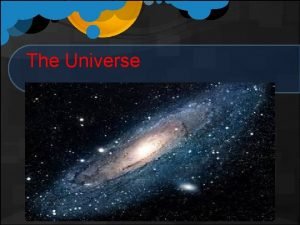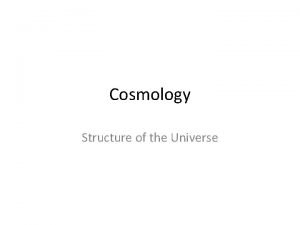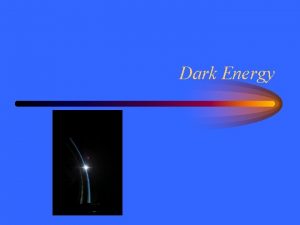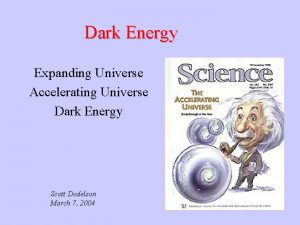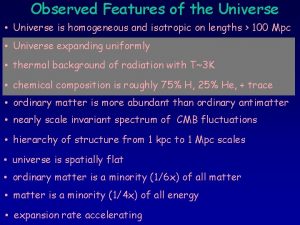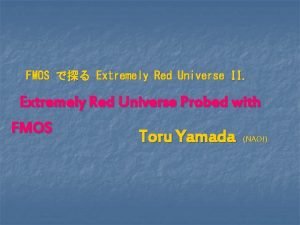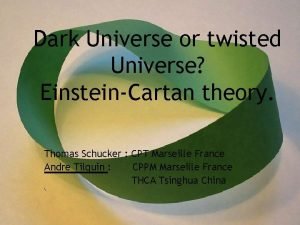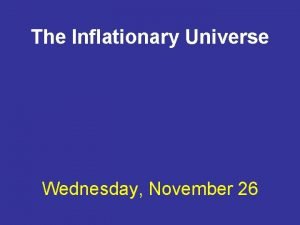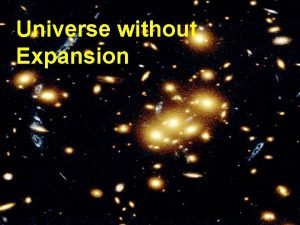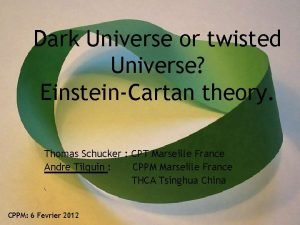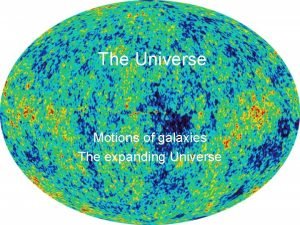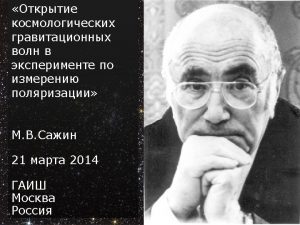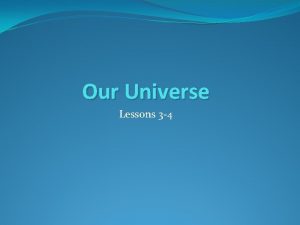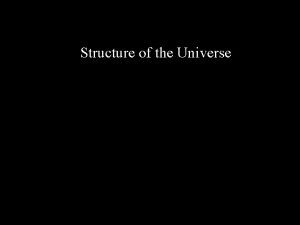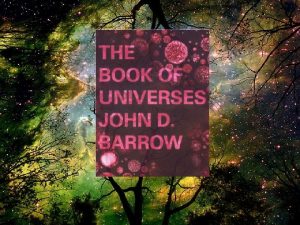Math Review Science and The Universe Math Review








































- Slides: 40

Math Review; Science and The Universe

Math Review • Excellent math reviews are available online several places • http: //glencoe. mcgrawhill. com/sites/0078740428/student_view 0/m ath_review. html • Also, Google search “Math Review” for more sites

Sample Problems

Formulas • 1. What is the formula for: – area of a circle – circumference of a circle • 2. What is the formula for: – hypotenuse of a right triangle? – Area of a triangle? • 3. What is the formula for the: – volume of a sphere? – surface area of a sphere?

Algebra

Trigonometry

Sources of Knowledge • Authority – Reliable if source is reliable • Intuition – Can often be wrong • Reason – Basis of math – Relies on correct postulates • Sensory Data – Can be mistaken – Machines can compensate

Four Stages of Science • Hypothesis – Reasonable starting guess • Theory – A well-tested hypothesis • Law – Hypothesis so tested as to be virtually unquestioned • Model – Schematic of system (usually mathematical) used to derive properties

Self-Evident Truths • Existence – Cogito ergo sum • Causality – Probably true – Neutrinos faster than light would lead to violation • Position Symmetry – Leads to conservation of momentum, angular momentum • Time symmetry – Leads to conservation of energy • Principle of noncontradiction – Probably true – No way to prove/disprove • Occam’s Razor – Assumed true – Magical elves in the sun?

Fundamental Forces • http: //hyperphysics. phyastr. gsu. edu/hbase/forces/funfo r. html • Gravity – Graviton particle (? ) – Infinite in range • Electromagnetism – Photon – Infinite in range • Weak – Z bosons – 10^-18 meters • Strong – W boson – 10^-15 meters

Laws of Motion

Position •

Change in Position •

Velocity •

Velocity Problem •

Acceleration •

Acceleration Notes • Acceleration is any change in the speed or direction of an object’s motion • Which of the following would involve acceleration? – A ball rolling down a hill – A ball rolling up a hill – A ball being twirled on the end of a string at a constant speed

Acceleration Problem •

Acceleration Problem #2 • A car is at rest on a freeway. • What does this statement tell us about the acceleration of the car?

The First Law of Motion • “Every object at rest, or in uniform motion, will remain in that state of motion unless compelled to do otherwise by forces acting upon it. ” • http: //www. grc. nasa. gov/ WWW/k 12/airplane/newton 1 g. html • In order to understand this mathematically and physically, lets introduce some notation

Examples of the First Law • Car sliding on an icy road • Package sliding across the seat of a car during a sharp turn • Car coasting along a level road, in neutral, with the engine turned off

Mass • An intrinsic property of matter • It is still an open question why objects in the universe have mass! – It is thought that mass comes from interactions particles with the Higgs field via the Higgs boson • Mass is not the same as weight • The SI unit of mass is the kilogram = 2. 2 pounds

Mass Problem • A ball is weighed on the surface of the earth and on the surface of the moon (where the gravitational field is approximately 1/6 as strong as that of the Earth). • What is the percent change in the mass of the ball in the two locations?

Second Law of Motion •

Force Problem #1 • What is the direction of the resulting acceleration?

Force Problem #2 • Assume that the object from the last slide has a mass of 2 kg and the forces act uniformly on the object for 5 seconds • What is the final velocity of the object?

Pythagorean Theorem • Equation relating the lengths of sides of a right triangle • A right triangle has one angle equal to 90 degrees • All interior angles of a triangle must sum to 180 degrees

Net Force • The net force acting on an object is the vector sum of all forces acting on the object • A vector has both a direction and a magnitude • What is the length of the vector in the picture? • Use Pythagorean theorem

Newton’s Third Law of Motion • “All forces result from interactions between pairs of objects, each object exerting a force on the other. The two resulting forces have the same strength and act in exactly the opposite directions. ” • The force of you on the earth is the same as the force of the earth on you.

Homework • Matching: 1 -9 • Analysis: 1 -3, 5 -7, 9 • Synthesis: 2, 5 -7

Gravity

Falling Objects •

Converting Units •

Uniform Acceleration Due to Gravity •

Orbit of the Moon • The moon orbits the Earth because it is falling towards the earth at the same rate that the surface of the Earth falls away under it • What would happen if the earth was flat? • The force of gravity between the Earth and moon are the same as if all the mass was concentrated at the center of the Earth/Moon • What would happen to the orbit of the Moon if the Earth collapsed into a black hole?

Gravity and Third Law of Motion • What is the reason that you don’t fall through the surface of the Earth due to gravity? • How does this relate to Newton’s Third Law of Motion? • Hypothesize as to why you might lose bone density during prolonged space travel.

Universal Law of Gravity •

Gravity of Curved Space-Time • Einstein’s Theory of General Relativity says that an object traveling on a curved path through a straight space-time is equivalent to an object traveling on a straight path through a curved space-time • There is also no difference between an object being uniformly accelerated and being in a uniform gravitational field

Movie on General Relativity • Check out: http: //www. youtube. com/watch? v=0 roc. Ntn. D -y. I • Clip from a Brian Greene documentary

Homework • • Comprehension: 1 -3 matching 1 -5 true/false Analysis: 1, 3 -9 Synthesis: 3 -5 Read about Cavendish experiment
 His favourite subject is
His favourite subject is Hình ảnh bộ gõ cơ thể búng tay
Hình ảnh bộ gõ cơ thể búng tay Lp html
Lp html Bổ thể
Bổ thể Tỉ lệ cơ thể trẻ em
Tỉ lệ cơ thể trẻ em Chó sói
Chó sói Tư thế worms-breton
Tư thế worms-breton Alleluia hat len nguoi oi
Alleluia hat len nguoi oi Các môn thể thao bắt đầu bằng tiếng đua
Các môn thể thao bắt đầu bằng tiếng đua Thế nào là hệ số cao nhất
Thế nào là hệ số cao nhất Các châu lục và đại dương trên thế giới
Các châu lục và đại dương trên thế giới Công thức tính độ biến thiên đông lượng
Công thức tính độ biến thiên đông lượng Trời xanh đây là của chúng ta thể thơ
Trời xanh đây là của chúng ta thể thơ Mật thư tọa độ 5x5
Mật thư tọa độ 5x5 Làm thế nào để 102-1=99
Làm thế nào để 102-1=99 độ dài liên kết
độ dài liên kết Các châu lục và đại dương trên thế giới
Các châu lục và đại dương trên thế giới Thể thơ truyền thống
Thể thơ truyền thống Quá trình desamine hóa có thể tạo ra
Quá trình desamine hóa có thể tạo ra Một số thể thơ truyền thống
Một số thể thơ truyền thống Cái miệng nó xinh thế
Cái miệng nó xinh thế Vẽ hình chiếu vuông góc của vật thể sau
Vẽ hình chiếu vuông góc của vật thể sau Thế nào là sự mỏi cơ
Thế nào là sự mỏi cơ đặc điểm cơ thể của người tối cổ
đặc điểm cơ thể của người tối cổ V. c c
V. c c Vẽ hình chiếu đứng bằng cạnh của vật thể
Vẽ hình chiếu đứng bằng cạnh của vật thể Tia chieu sa te
Tia chieu sa te Thẻ vin
Thẻ vin đại từ thay thế
đại từ thay thế điện thế nghỉ
điện thế nghỉ Tư thế ngồi viết
Tư thế ngồi viết Diễn thế sinh thái là
Diễn thế sinh thái là Dạng đột biến một nhiễm là
Dạng đột biến một nhiễm là Số nguyên tố là
Số nguyên tố là Tư thế ngồi viết
Tư thế ngồi viết Lời thề hippocrates
Lời thề hippocrates Thiếu nhi thế giới liên hoan
Thiếu nhi thế giới liên hoan ưu thế lai là gì
ưu thế lai là gì Hươu thường đẻ mỗi lứa mấy con
Hươu thường đẻ mỗi lứa mấy con Khi nào hổ mẹ dạy hổ con săn mồi
Khi nào hổ mẹ dạy hổ con săn mồi Sơ đồ cơ thể người
Sơ đồ cơ thể người









































